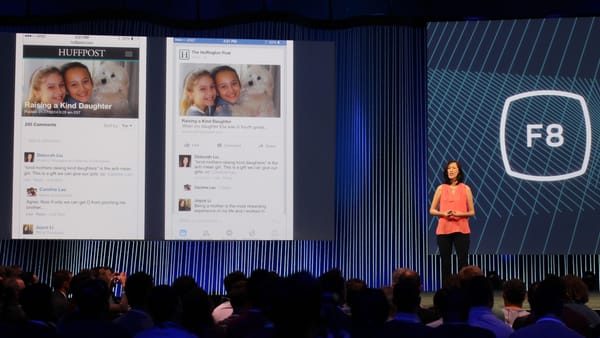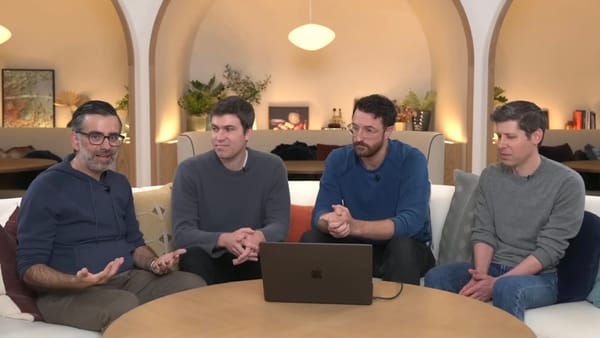OpenAI Turns ChatGPT Into a Web App Platform
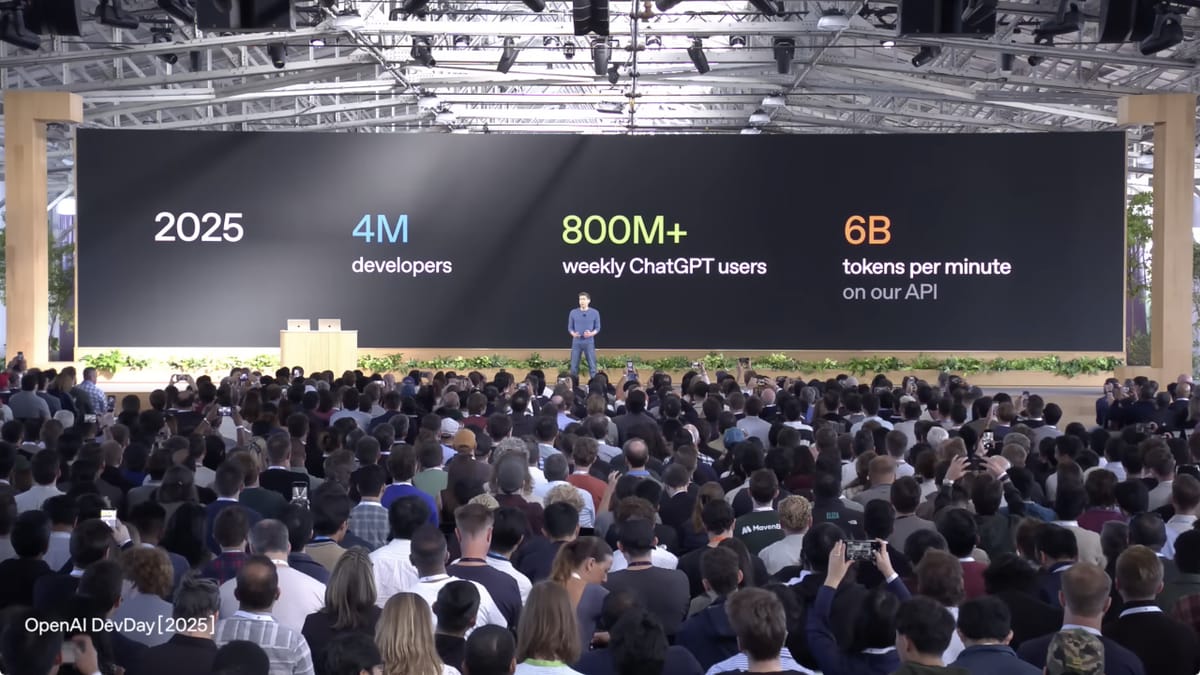
This week we saw the launch of a new application platform: OpenAI's ChatGPT apps, including a platform for third-party developers to submit apps to be embedded in ChatGPT. Most intriguing for web tech fans: the defining trait of OpenAI's software developer kit, Apps SDK, is its web-based UI model.
ChatGPT apps has echoes of the great smartphone app platform launches of 2008 — both iOS and Android. Arguably, given the enormous popularity of OpenAI and the chatbot user paradigm it pioneered, this is the first mainstream application platform with a genuine chance of rivaling those two smartphone app stores.
But of course, being web-based makes this fundamentally different to both the iOS and Android app platforms. Even though OpenAI’s App SDK sits a layer higher in the stack — ChatGPT has iOS, Android and browser versions — it potentially has massive pulling power as an app-distribution platform.
Let's dig into OpenAI's announcement some more, then we'll get to WTN's regular sections on web platform opportunities and open social web.
AI x Web: Emerging Strategies
🤖 ChatGPT Apps — As noted above, OpenAI introduced apps in ChatGPT at its DevDay event this week. The company is positioning this as "apps you can chat with." Essentially, these apps are embedded web experiences inside of ChatGPT.
WTN Note: To nobody's surprise, ChatGPT is becoming an application platform — do they even need to build their own browser? What's also interesting here is that for companies like Zillow and Canva, ChatGPT will take usage away from their own native mobile apps; for example, you can create a quick Canva presentation now from within ChatGPT.
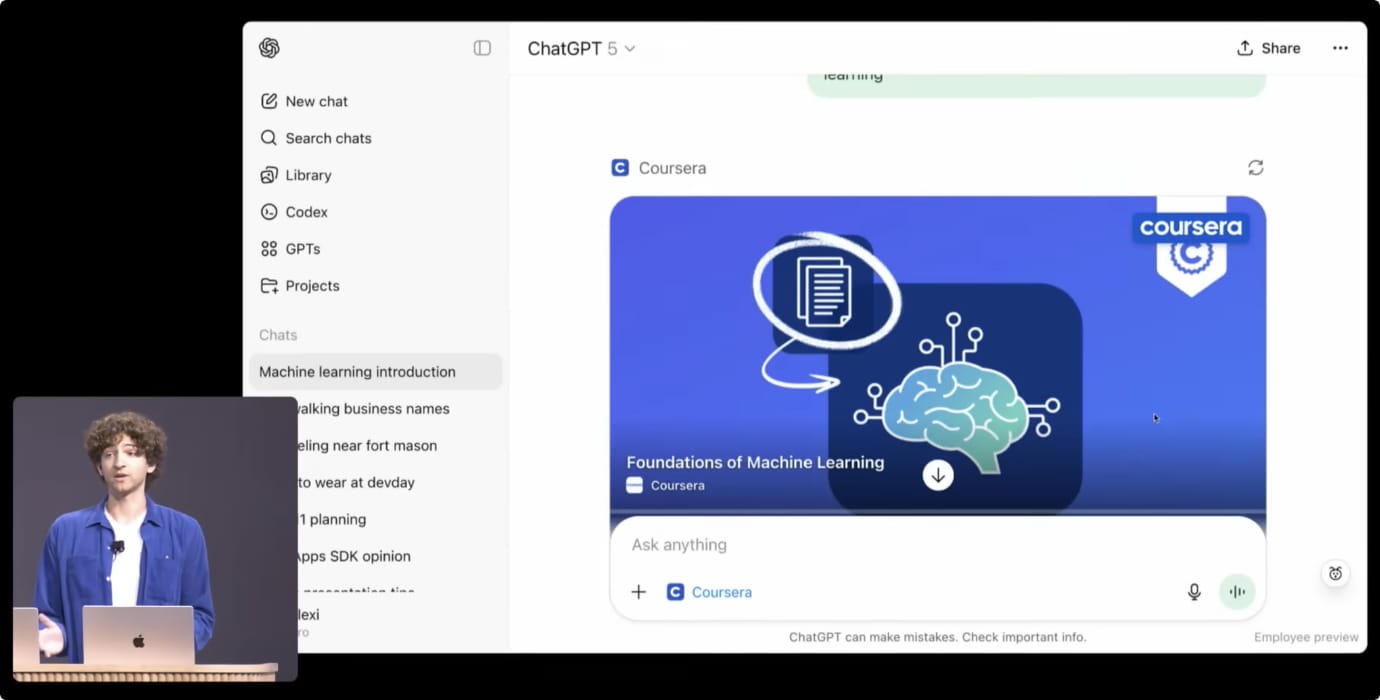
🤖 Apps SDK — Even better, OpenAI introduced the Apps SDK for third-party apps; it's built on MCP and "extends MCP so developers can design both the logic and interface of their apps." Mirroring the great smartphone app store launches of 2008 (iOS and Android), OpenAI says it will "begin accepting app submissions for review and publication" later this year.
WTN Note: In an explanatory article on The New Stack, I looked at the nuts and bolts of Apps SDK. In short, the Apps SDK formalizes ChatGPT as a web runtime — apps are sandboxed iframes rendered inline in conversation. This subtly reframes the web as content inside AI, not the other way around. Developers should watch how OpenAI handles monetization and discoverability — both key levers for a viable app economy.
Here are some of the other dev highlights:
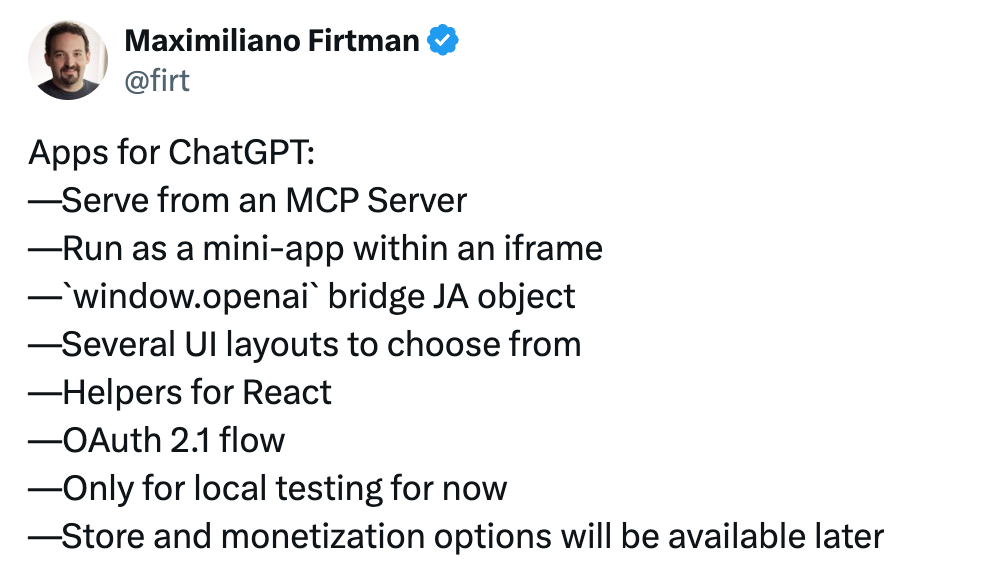
🤖 AgentKit — Also noteworthy for devs, and entrepreneurs who want to pretend they're devs, OpenAI announced AgentKit — a toolkit to build AI agents. As well as a low-code agent builder, there is ChatKit, "for embedding customizable chat-based agent experiences in your product." Sam Altman said that AgentKit is "a complete set of building blocks [...] designed to help you take agents from prototype to production."
WTN Note: AgentKit targets developers who want to build independent agents, rather than embed directly inside ChatGPT. It complements the Apps SDK — OpenAI is now supplying both the internal ecosystem (apps within ChatGPT) and the external toolchain (agents beyond ChatGPT). This dual reach gives OpenAI influence over the entire emerging “agent economy,” from creation to distribution.
🤖 Vercel gets in on ChatGPT apps: "You can now build and deploy ChatGPT apps directly on Vercel, with full support for modern web frameworks."
WTN Note: Vercel’s quick integration shows how AI app development is being absorbed into the modern web stack. Can we expect a full ChatGPT-based web framework at some point?
Open Social Business
🦣 This week, I attended FediForum, a two-day virtual event, to find out what's new in open social web development. One of the themes of Ben Werdmuller's keynote was that “everything big started small.” He referenced how Twitter started as an SMS group messaging service, but obviously turned into something much bigger. The apps I highlighted in my writeup for The New Stack are all small right now, but any one of them could become something much bigger:
- AltStore, an alternative app store for iOS, has launched onto the fediverse.
- The team behind Bridgy Fed has announced Mastodon to Bluesky migration.
- Frequency is a photo and video sharing app with an emphasis on privacy and no algorithmic engagement bait.
- CrowdBucks helps creators and devs support themselves in the fediverse.
WTN Note: With the caveat that this is still an immature market, for startups and investors it's a reminder that the next generation of social innovation may emerge from small, federated tools — not monolithic platforms. Let's hope so, anyway!
🦣 Mastodon has begun to experiment with "Packs" — its version of Bluesky's Starter Packs. In a blog post, Mastodon wrote:
"We believe that these kinds of user-generated, curated collections could help people to find their tribe more quickly when they join the Fediverse. At the same time, envisioning a similar feature that prioritises user consent, and works across a constellation of independent servers, is no small feat."
WTN Note: Starter packs could lower onboarding friction and accelerate network effects on Mastodon. The risk, as Laurens Hof points out, is engagement-hacking and context collapse — challenges any open network must solve to scale responsibly.
📰 Hey, remember RSS? It's still alive and kicking, as this excellent deep dive into the RSS feed reader landscape shows. It's from Lighthouse, which lists itself among the SaaS products.
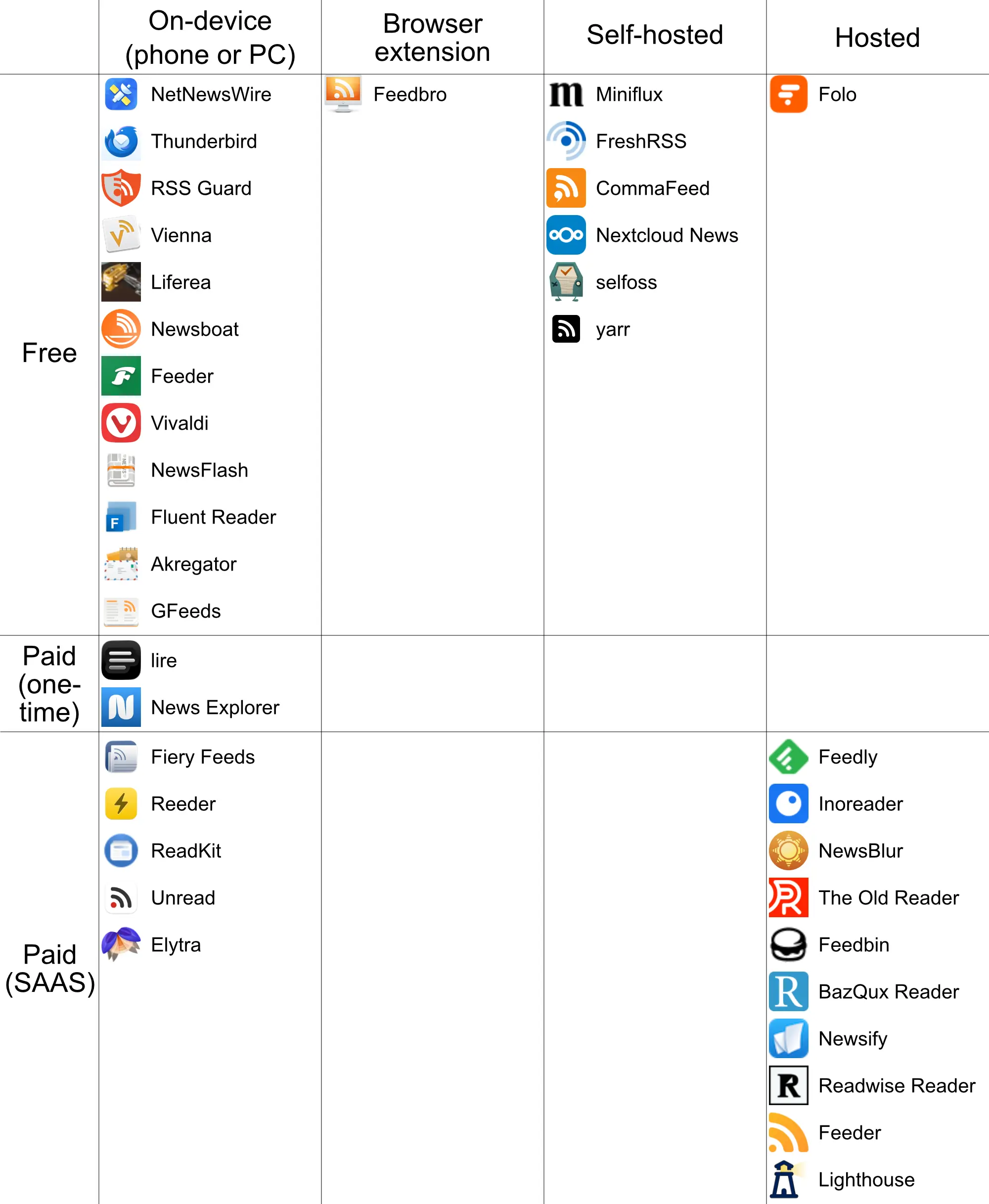
WTN Note: RSS never truly died — it’s quietly powering independent distribution again. For media and SaaS companies, owning your feed means owning your audience, a lesson many are relearning as corporate platforms like Facebook, Threads and X tighten control over distribution.
📰 Speaking of RSS, Brent Simmons explains why NetNewsWire is not a web app. Despite still bristling "at having to publish NetNewsWire for iOS through the App Store," he prefers it over web distribution. The main reasons he gives are 1) he'd have to pay "way more" for web and database hosting, and 2) it's easier for him to protect users.
WTN Note: To put my cards fully on the table, I've always preferred and mostly used browser-based RSS Readers. From Bloglines in 2003, to Google Reader later, to Feedly now. I just like the portability of being able to view my Reader through the various computers and devices I have. But each to their own!
Web Platform Opportunities
🌐 Quiet is a source-available user interface library for the modern Web, created by Cory LaViska (who also created Shoelace, a library of web components). Says Cory: "[Quiet] features 88 accessible, performant, localized, and interoperable components along with an optional CSS reset to streamline development of websites and apps."
WTN Note: Native web component libraries help devs move away from heavy frameworks. This should reduce complexity and improve accessibility, without the vendor lock-in.
🌐 Meta has announced the React Foundation, "The New Home for React & React Native." It will be part of the Linux Foundation. Meta says it will "continue to invest in React and use it as our primary tool for building UI on the web and across many of Meta’s apps."
WTN Note: Meta’s move to place React under the Linux Foundation is as much optics as openness. React’s growing complexity and performance issues have dented its reputation, while Vercel's influence has become more pronounced in recent years. Shifting governance helps Meta deflect criticism and maintain influence without owning the baggage.
🌐 Mozilla launches profile management: "Beginning Oct. 14, we’re rolling out profile management in Firefox so you can keep them separate and create distinct spaces — each with its own bookmarks, logins, history, extensions and themes."
WTN Note: Chrome has had profiles for a while now, but Firefox says it won't collect "your age, gender, precise location, name of your profile, or other information Big Tech collects and profits from."
🌐 This month the Internet Archive celebrates "1 trillion web pages preserved and available for access via the Wayback Machine." On Hacker News, IA's Jason Scott added that IA currently holds "between 150-200 petabytes of unique data, probably on the lowish end of that last I checked."
🌐 Andreas Kling posted on X that his Ladybird browser has passed the 90% threshold on web-platform-tests, which he says "is the arbitrary limit Apple says we must reach to be considered an eligible alternative browser engine on iOS. (+ other requirements)"
One More Thing
🎈 I've been enjoying the tv show Murderbot (on Apple TV+), so I thought I'd try my hand at creating a meme relevant to this edition of WTN.
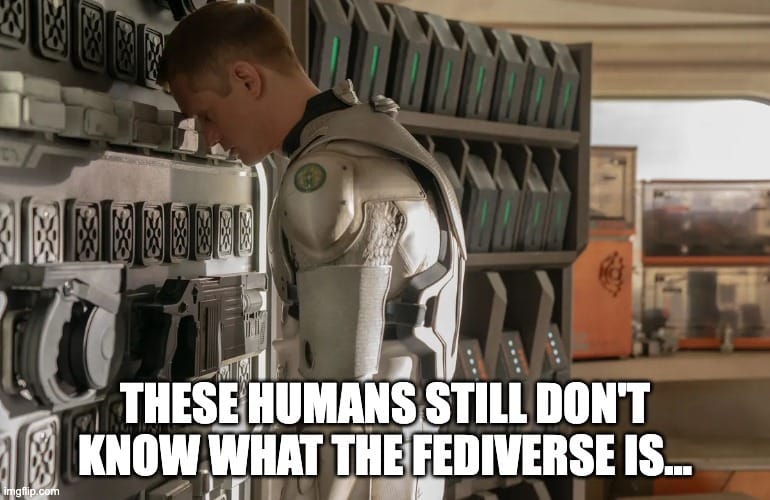
Thanks for reading Web Technology News (WTN), your weekly briefing on the Web’s future: infrastructure, open networks, and AI. I'm still in the early phase of this project, so please share the newsletter on your favorite social media platform — that'd really help me out.
You can get the full content of WTN via email (the form is on the WTN homepage) or RSS. A benefit of signing up via email is that it allows you to post comments on the URL where this post lives: i.e. on the Web.
You can also follow WTN on social media: search "@feed@webtechnology.news" on Mastodon or click here to follow on Bluesky.
Until next week, keep on blogging!
